Toyota GR86 Vs Subaru BRZ Vs Mazda MX-5 Miata: Simple Pleasures

We’re a practical bunch here at AutoGuide. We like when something serves dual purposes, like this three car comparison of the Toyota GR86 vs Subaru BRZ vs Mazda MX-5 Miata. It’s both a family rivalry and a rematch.
The last time we stuck the Toyota 86 (nee GR) up against the Mazda Miata, it was Mazda’s topless wonder that came out ahead. It was simply more fun. Toyota has thoroughly tweaked its two-door coupe on the way to its GR86 rebranding, dropping in a bigger-displacement engine, adding more creature comforts, modernizing the looks—and all the while, like the Miata, barely adding any weight.
Get a Quote on a New Mazda MX-5 Miata, Subaru BRZ, or Toyota GR86But we couldn’t leave it at that. Since the introduction of the Toyobaru twins a decade ago, one of the most common questions is how the Toyota and Subaru iterations differ. So we brought along the BRZ too, to really get granular. A week with them all, between myself, managing editor Mike Schlee, and contributing writer (and photographer) Harry Zhou gave us the answers we were looking for.
2022 Mazda MX-5 Miata — 3rd Place
It’s been the perennial favorite since 1989, and one that’s stuck around while competitors in the small, rear-wheel drive segment slowly disappeared. It’s also the only affordable convertible left on the market that’s dedicated to the sports car driving experience.
The same stuff that makes the Mazda Miata an icon also hampers its ranking in this lineup. It doesn’t offer nearly the same sort of everyday versatility as the other two, and can end up costing more than you’d expect.
Float Like a Butterfly
The way a Miata moves through the corners is 45-percent of its charm. It’s not so sharp that it is unstable, nor is it so flat that it feels like a 2D video game. Steering is precise and there’s a great feel for the road underneath. It’s just enough to give you some false hope of a racing career, but not so much so that it gets you in trouble.
For 2022, Mazda has added what it calls Kinematic Posture Control, which is meant to mitigate some body roll by applying small amounts of braking to the rear. Even with it included, the MX-5 doesn’t drive like a track car. There is still a noticeable amount of body roll, but only so much so that the cornering experience is more like a violin concerto rather than a brutal thrashing of G-forces. Bilstein shocks come with the Club and manual-equipped Touring models (GS-P and GT in Canada, respectively). Whereas the GR86 briefly lets loose at the rear on a damp on-ramp, the Miata never got a chance to feel out of composure.
On our tester, most of the braking force is biased towards the end of the brake pedal travel. Brembos are available as part of the Sport Package on the Club Trim (GS-P in Canada). A square setup of 205/45R Bridgestone Potenza S001s round out each corner.
Manual Enjoyment
Making your right arm do some extra work in the Mazda accounts for at least another 45-percent of the fun, a number scientifically derived from having spent hours in the driver’s seat. The six-speed manual transmission enters into the cabin via a short-throw shifter, attached to a diminutive leather-wrapped shift knob. The shifting experience is delicate, engaging with a mechanical satisfaction that sends endorphins across the brain. The clutch carries just enough weight and engages early. There is really no need for automatic rev-matching when every shift carries with it an intention that, when executed perfectly, rewards you with an unparalleled sense of accomplishment.
You can also choose to equip any MX-5 with an optional six-speed automatic in Canada, but it’s now only available with Grand Touring trim in the US. If you are making a conscious decision to ride in a tube-on-wheels for the sake of the driving experience, why bother with the automatic?
Keep Up the Revs
Sheer power has never been part of a Miata’s M.O. The SKYACTIV-G 2.0-liter engine puts out 181 horsepower at 7,000 rpm, with 151 lb-ft of torque. Compared to either the GR86 or BRZ, the Mazda is down 47 horses and 33 lb-ft. It’s definitely a difference you will notice, but not necessarily one that you’ll care too much about after having gotten to know the Miata. Power delivery is smooth all the way to redline, and torque is consistent to almost 5,000 rpm. Keep the revs up high, and the car will keep a smile on your face. You can turn your nose up at those that simply mash the pedals as you expertly glide past, corner by corner.
It also does its job more efficiently too. The smaller engine and lighter body demands less fuel for the drive, coming in at 26/34/29 mpg for city, highway, and combined (9.0, 6.9, and 8.1 L/100 km).
Pack Light
The Miata’s a small car, there’s no getting around it. While sitting in traffic, a fellow driver in a BMW 1 Series cabrio pulled alongside and asked if the Mazda was somehow even smaller than their car. The BMW was a house in comparison, with the MX-5 coming in at 154.1 inches (3,914 millimeters) long on a 90.0-inch (2,286-mm) wheelbase.
SEE ALSO: 2020 Mazda MX-5 Miata Review: Ooh-Ooh What a FeelingThere isn’t a magic portal to a cavernous interior either. There are 43.1 inches (1095 mm) of legroom and 37.4 inches (950 mm) of headroom, which will maybe accommodate most drivers under six-foot (but just barely if so). The 4.59 cubic feet (130 L) of trunk space feels larger than it is however, with a larger opening that’s more conducive to loading and unloading your things than the BRZ/GR86. Interior stowage is limited to the armrest and a small cubby between the seat backs. You’ll have enough space in the MX-5 for just your phone and keys, and not much else.
Operating the roof is joyfully simple, requiring just one arm movement and working a single latch. Our Canadian-spec tester came without automatic climate control, but Apple CarPlay and Android Auto come standard on all cars and operate through a 7.0-inch touchscreen.
Weekend Warrior
On the road, it’s hard to find the same level of finesse and balance the Miata exhibits. Responsive and poised, you start to feel at one with the car as you learn its limits. It’s built for that singular purpose. Where things start to fall apart is having to take into consideration the price and equipment. While the base MX-5 Sport starts at a competitive $27,825 including destination ($35,150 CAD for MX-5 GS in Canada) , you’re left with manual climate controls and a slightly smaller screen as compared to the GR86 or BRZ. At the other end of the pricing spectrum, a MX-5 Miata RF Club hardtop convertible is priced from $39,545 plus destination charges ($45,550 CAD).
It’s a fantastically great second or third car for the driveway. Unfortunately, it just can’t keep up with the practicality and value of the offerings from Toyota or Subaru.
2022 Subaru BRZ — 2nd Place
A goal for every manufacturer is to improve upon a car from generation to generation. But rarely does one succeed in creating something that bests the outgoing model in nearly every aspect. The 2023 Subaru BRZ is one of those cars. Power, ride comfort, styling, interior design, and handling are all better in the new BRZ.
Starting on the outside, the BRZ wears more cohesive sheet metal. The old car wasn’t ugly, but the design was a bit disjointed and had aged. The new car is smoother, with hints of Cayman up front and Supra in the rear. Dimensionally, not much has changed as the new BRZ is just over 1 inch longer and the exact same width as the old car.
A closer examination reveals it’s not a performance pretender either, as every visible vent is real, providing actual function. From the intakes on the front bumper that exit through the front wheel wells to the large vents slashing across the front fenders. All aspects of the BRZ’s shape are optimized for aerodynamics and performance.
All the Power Without the Dip
Backing up the new car’s sporty looks is a new 2.4-liter flat-four Boxer engine that makes 228 hp and 184 lb-ft of torque. It’s a decent jump on paper of 23 hp and 28 lb-ft of torque compared to the old BRZ. But in practice, the power increase is more than the sum of its parts.
The larger displacement engine means there is ample mid-range torque. The BRZ doesn’t need to be driven at the absolute top of the rev range to get the most out of it. A lot of this has to do with a flatter torque curve that has mostly eliminated the much lamented torque dip found in the previous generation.
We also appreciate the engine’s dual personality. At idle and cruising speed, it remains quiet, subtly murmuring in the background. But dip into the higher rpms and the BRZ is positively growly. Is it all genuine engine noise? No; but we don’t care. It adds to the visceral experience behind the wheel of a car that provides more smiles per dollar than just about anything on the market. It also seems louder than its corporate cousin, the GR86, but that might just be our ears playing tricks on us.
Familiar Gearboxes
The 2023 Subaru BRZ still offers the choice of a six-speed manual or six-speed automatic transmission. With the manual transmission installed, Subaru rates the new BRZ at 20 mpg (12.0 L/100 km) in the city and 27 mpg (8.8 L/100 km) on the highway. The automatic unit is more efficient, with ratings of 21 mpg (11.0 L/100 km) city and 30 mpg (7.7 L/100 km) highway.
SEE ALSO: Why Subaru Believes the World Needs the 2022 Subaru BRZFor the purposes of our comparison test, we opted for the more engaging manual transmission. The gearbox is very mechanical and precise. It’s reminiscent of a Honda unit, if not lacking a bit of precision and fluidity. None of us found it as smooth as MX-5 Miata’s transmission though.
Same story for Subaru’s clutch pedal which is very soft and incredibly vague. It takes some practice to find the uptake point. Mazda’s clutch pedal is much more communicative and easier to engage.
Kidneys Rejoice
One of our biggest complaints with the previous BRZ was the harsh ride. Poorly maintained roads were real kidney killers as the little coupe would crash over frost-heave induced imperfections. For 2023, this is all but a distant memory. The ride is no longer punishing like the old model. It is still decidedly on the firm side but doesn’t rattle one’s innards over every piece of broken pavement.
Handling has always been a forte of the BRZ, and as mentioned previously, it has gotten even better. The 215/40R18 Michelin Pilot Sport 4 summer performance tires grip the road tremendously but can still be coaxed to break loose at the rear when the mood is right. In the rain, the BRZ is full-on ready to drift around every bend it encounters. The 13.5:1 ratio steering is precise, making the driver feel as one with the machine. It might not be as light and engaging as the Miata’s, but it’s so much closer in intuitive feel compared to the outgoing model. In fact, everything about the fun-to-drive factor on the new BRZ is closer to that of the MX-5. If we were to arbitrarily rank the old BRZ as 8/10ths the fun of the Miata, the new one clocks in at a solid 9/10ths or maybe even 9.5/10ths.
Modern Enhancements
The intimate interior of the BRZ is still not a sophisticated class leader, but it’s improved over the spartan 2021 BRZ. A new infotainment screen is the focal point of the dashboard and includes items like Subaru’s STARLINK telematics software. Unlike the MX-5 Miata in our test, the BRZ included a few comfort items like heated seats and a dual-zone automatic climate control. My favorite feature is the programable performance screens found within gauge cluster.
Like the exterior, the interior dimensions haven’t changed all that much with the new model. Front headroom and legroom are down slightly to 37.0 inches (940 mm) and 41.5 inches (1,054 mm) respectively. The child-only rear seats lose a bit more headroom, down 1.5 inches (38 mm) to 33.5 inches (851 mm), while legroom remains the same at 29.9 inches (759 mm). Cargo space is also down about half a cubic foot, to 6.3 cu ft. (178 L). Despite these figures, the BRZ is such a more comfortable, spacious place to be than the Miata. The Mazda always reminds you of its cramped quarters and limitations. The BRZ just feels like a regular car inside.
How to Pick a Winner?
With the Subaru BRZ and Toyota GR86 so close in execution, how did we ever pick a winner? With the only obvious different we could find – pricing.
Including destination charges, the entry level BRZ Premium starts at $29,615 USD ($32,395 CAD), which is $710 USD more than an entry GR86. As tested, our BRZ Limited equipped with the manual transmission comes in at $32,115 USD ($35,395 CAD for Sport-tech). That’s a $590 USD premium over the nearly identically equipped GR86.
One caveat to note for Canadians though, this slight pricing disparity flips in the land of the maple leaf, with the GR86 costing slightly more than the BRZ.
2022 Toyota GR86 — 1st Place
As Mike said, the Toyota’s slight price advantage is what put it ahead of its mechanical twin, at least in the US. For me, there’s another reason: that rear spoiler.
Is the exaggerated curve necessary? Probably not. Does it eat into what’s already pretty limited rear visibility? Yep. But view the GR86 from the rear three-quarter, and the swoopy shape is just so right. The original model was quite rightly known as a blank canvas, a car on which owners could build their dreams. This new version still has that quality, no doubt. Balancing better looks with improved drivability and modern tech, the 2022 Toyota GR86 is now thoroughly impressive right out of the box, too.
Easier to Drive, Slow or Fast
I don’t need to repeat the important mechanical details here—Mike already covered the drivetrain improvements. Instead, I’ll talk about a more exciting subject: construction.
One of the original 86 memories forever burned into my brain is that of being stuck in traffic in a construction zone. It was miserable. The ride was stiff, the clutch was vague, and the dearth of cruise-along torque was obvious. Conversely, the new model is a revelation. Still on the firm side, the GR86 is no longer punishing over harsh tarmac, and NVH is improved. The increased torque from that big-bore 2.4-liter engine makes it a much calmer, smoother car in stop-and-go situations, too.
Clear out of the city and the GR86 is with you every step of the way. The new engine still zings towards redline, a free-revving joy in the era of diesel-like turbocharged power curves. It builds its power linearly, eliminating the torque dip that plagued the old car. While you can—and should—explore the upper reaches of the tachometer, it’s no longer absolutely required for swift progress.
The shifter is still a tight, mechanical experience, though the clutch is the worst of the group. It’s somehow more vague than the one in the BRZ, which I’m chalking up to the GR86’s longer time on the local press fleet. Journos gonna journo.
Balancing Act
There’s a reason you buy the Toyobarus (or MX-5) over the similarly priced performance front-drivers out there. No matter how good modern hot hatches get, they’re still pulling versus pushing. The economy car roots also result in high-up seating positions, robbing drivers of a crucial feeling of interaction.
The seats in the Toyota are mounted absurdly low. It feels special right from the off, like the driver is an integral part of the setup. Point the GR86 at a corner and it slices through with eagerness and precision. It’s true, Toyota has fit grippier rubber to its sports coupe, which extends its road-holding ability. But there’s still that delicacy to the thin-rimmed steering wheel, the kind that you only find in a rigid, rear-drive chassis. The extra grip matches the extra power perfectly, making for a predictable, balanced drive. There’s enough power to wag the tail, and enough feedback to rein it back in.
SEE ALSO: 2022 Toyota GR86 First Drive Review: Old-School, EvolvedIs there a difference between the GR86 and BRZ? If there is, we couldn’t suss it out on public roads. The previous generation saw a slightly more tail-happy setup in the Toyota, but here, both cars have a neutral balance. The Subaru’s exhaust seemed slightly louder, is all.
In my first drive last fall with a pre-prod prototype, I called the GR86 a front-engined Porsche 718. This car’s vague clutch aside, I stand by that assessment.
Practicality Matters
I won’t lie: from a purely driving enjoyment perspective, the Miata is still the winner for me. There’s a consistency to the MX-5’s dynamics and touch points that continue to shine, even as the car enters its twilight years. Like Mike said though, the new Toyobaru is much closer to that ideal than before.
But we’re talking performance cars on a budget, the sort of cars that are likely to be used on a regular basis. Factor that in, and the Miata just can’t keep up. Anything more than two cell phones won’t really fit in the tight cabin. While the Mazda has a handily wide trunk opening, the actual space is small, too.
Don’t discount the effectiveness of the GR86’s four-seat cabin. Yes, it’s quite possibly the most accurate 2+2 setup on the market; you won’t be slotting any adults back there unless you want them to hate you. It’s a great space to toss grocery bags, though. With the ability to fold down its rear seats, the GR86 offers up a level of practicality the Miata simply dreams of.
Modern(ish) Creature Comforts
Look, none of these cars offer up convincingly modern infotainment or an abundance of creature comforts. The latter is antithetical to back-to-basics sports cars, and the former is more of a bonus than anything.
The Subaru—whoops, sorry “Toyota”—infotainment experience is fine. It’s not pretty, but the 8.0-inch screen responds so much quicker than the abysmal (and smaller) Mazda unit. Wired Apple CarPlay and Android Auto works without issue, and you can actually store your phone somewhere. We like the configurable driver display, too. While the one in the GR86 is visually identical to the Subaru example, it’s ever so slightly less customizable, specifically in Track Mode, which locks the left-most info panel to lap times.
We’re all old enough to acknowledge a few creature comforts don’t ruin a sports car. The Toyota’s dual-zone automatic climate control is simply handy, as are the effective seat heaters. The eight-speaker sound system does a good job pumping out the tunes, too. If you opt for the automatic transmission, you’ll even net a reasonable suite of driving assists, including adaptive cruise control.
The Miata might have the eye-catching, exterior-matching trim bits, but the GR86’s interior is the more pleasant space. There’s a lot of soft-touch Alcantara and leather, and the seats, while more aggressively bolstered, prove very comfortable on longer drives. The rotary dials and toggle switches in the center console are nicer, too.
Better In Every Way
Mike summed it up best when he said the BRZ was better in every way than the car it replaced. Unsurprisingly, the same is true for the GR86. Toyota has carefully and thoughtfully improved on the aspects that needed it—power, everyday drivability, suspension tuning, interior design, styling—without fundamentally altering the inherent attitude of the little sports coupe. This is a joyous, involving drive, a scalpel of a machine against the landscape of Mustang and Camaro sledgehammers. In this three-car match-up, the GR86 has reclaimed honor in its MX-5 rematch, and slightly undercuts its Subaru sibling.
Oh, and this one has that cool ducktail spoiler. Checkmate.
Become an AutoGuide insider. Get the latest from the automotive world first by subscribing to our newsletter here.

Kyle began his automotive obsession before he even started school, courtesy of a remote control Porsche and various LEGO sets. He later studied advertising and graphic design at Humber College, which led him to writing about cars (both real and digital). He is now a proud member of the Automobile Journalists Association of Canada (AJAC), where he was the Journalist of the Year runner-up for 2021.
More by Kyle Patrick
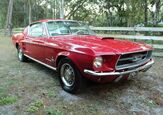


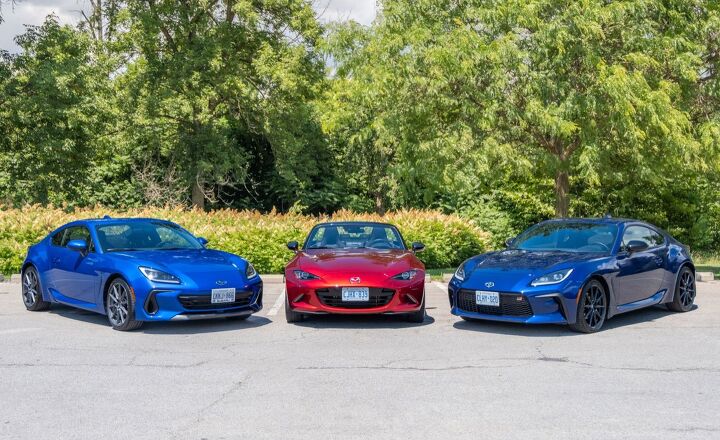
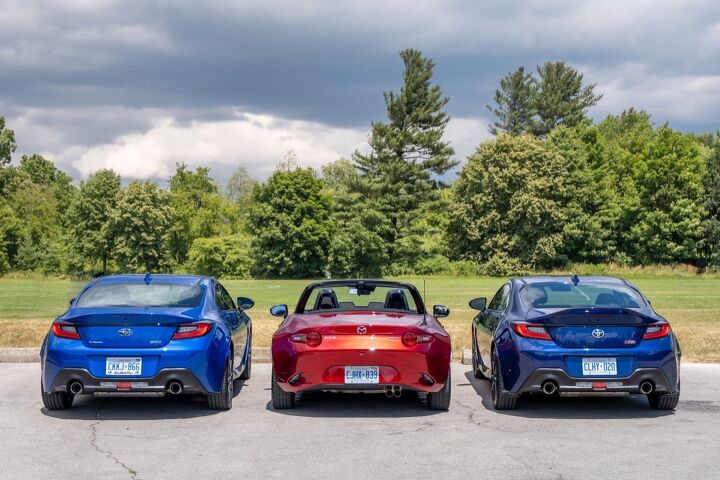































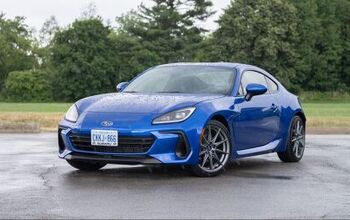
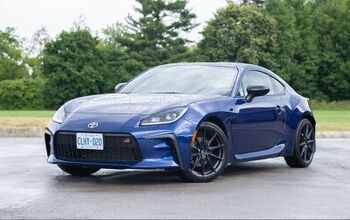
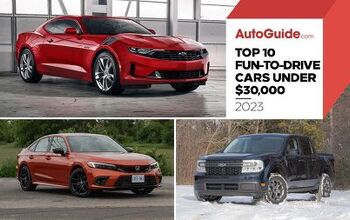
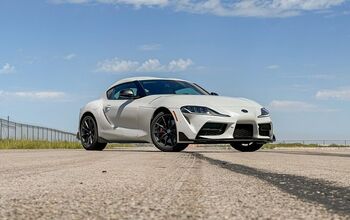
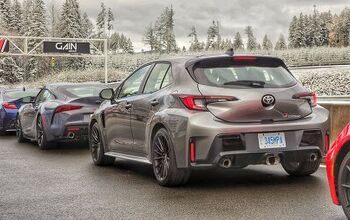











Comments
Join the conversation
True
For me, RF is gorgeous. Hope I'll have one in my garage.